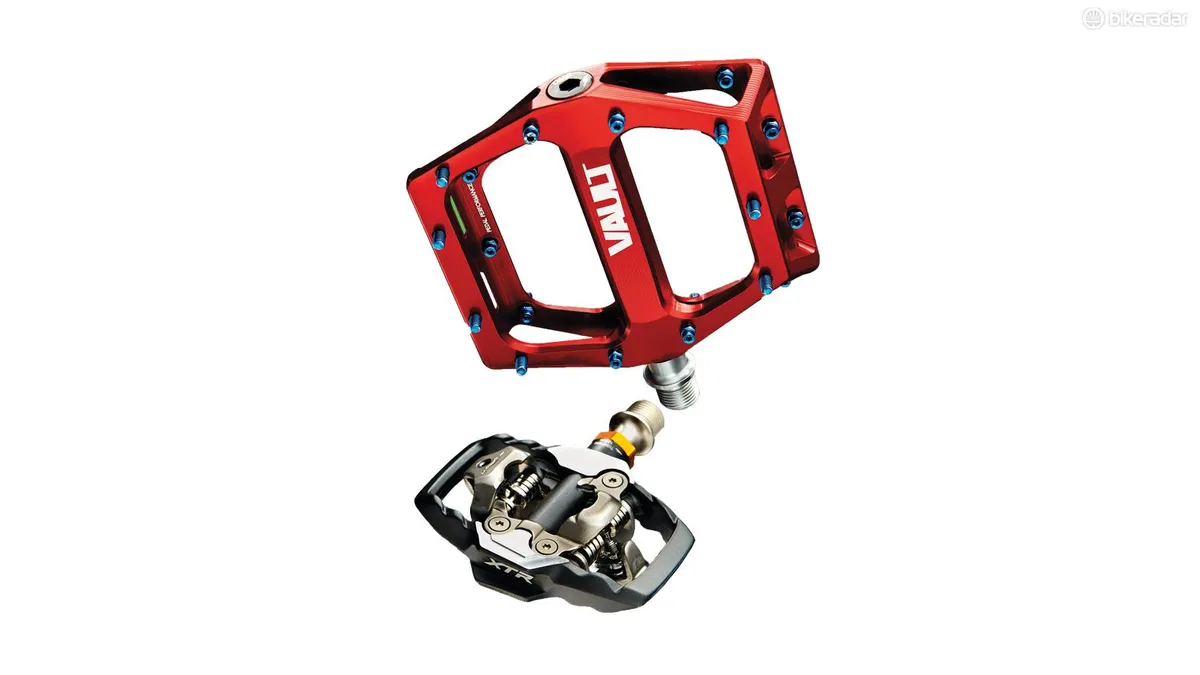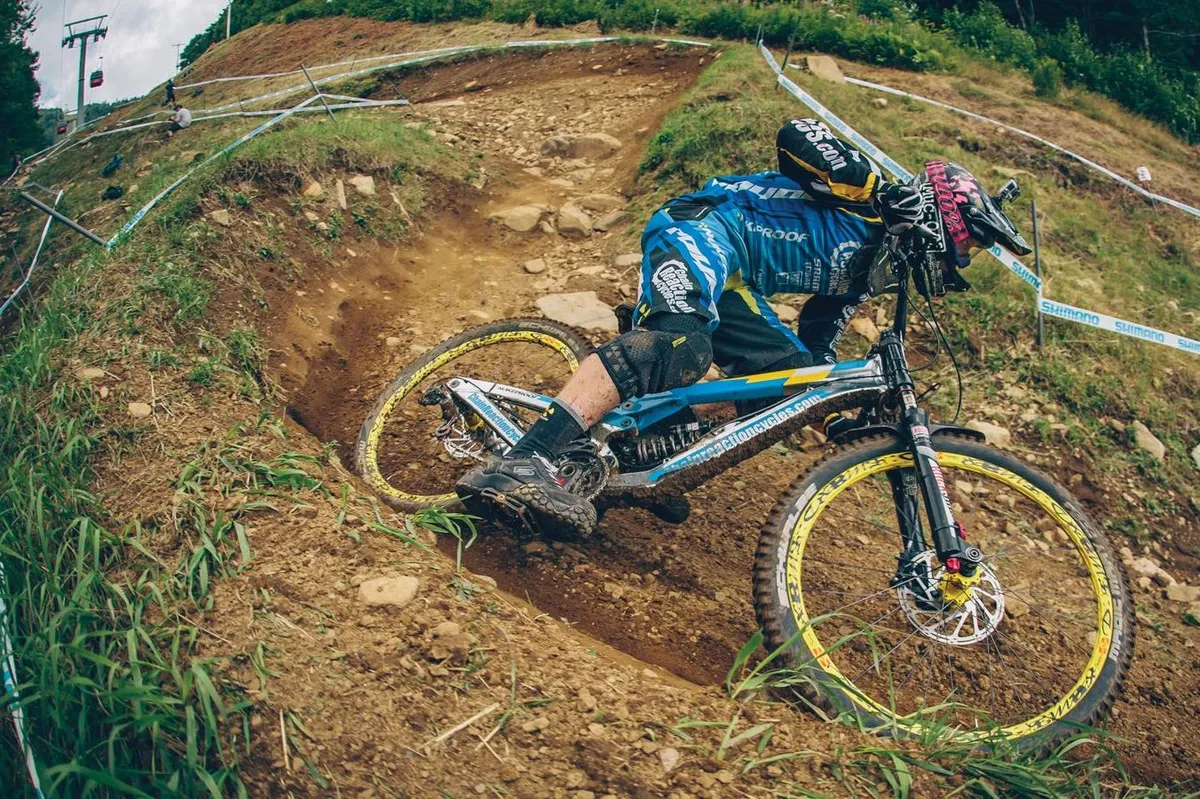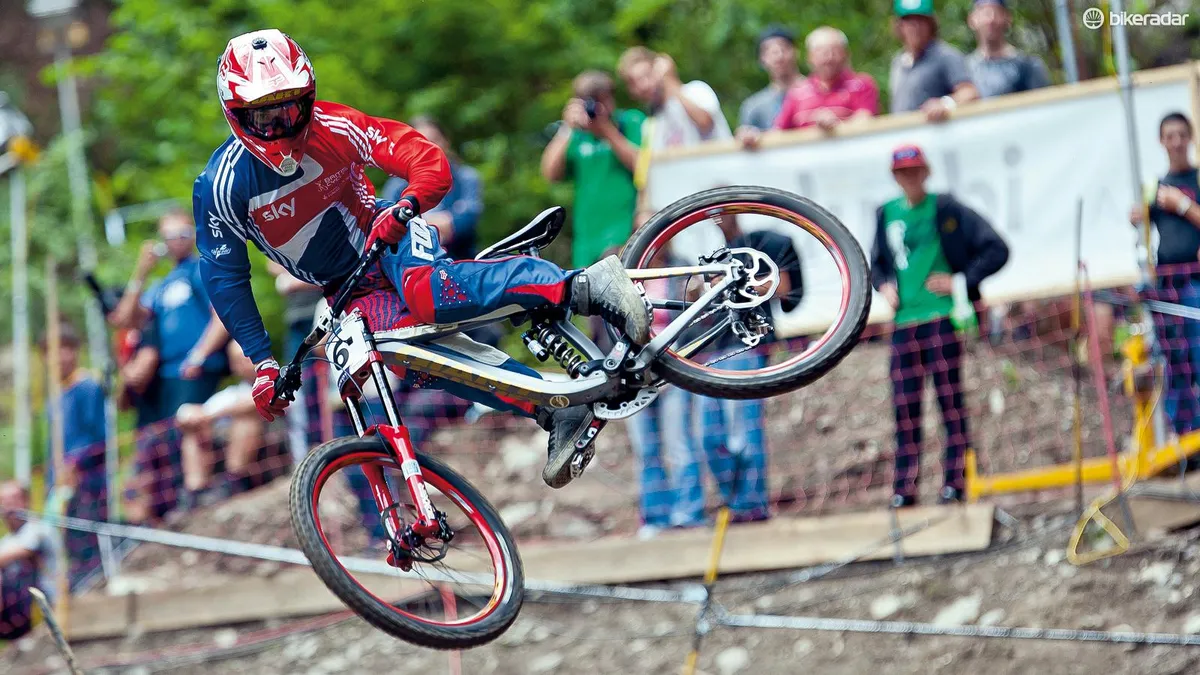The first mountain bikes used simple ‘bear trap’ pedals with a serrated cage. While they worked well enough with the right shoes, a quest for better pedalling efficiency and more secure footing led to us borrowing toe-clips and straps from our skinny-wheeled cousins. Off road these were petrifying, because you were literally strapped to the bike, but they did make climbing and rough terrain easier.
Thankfully Shimano soon stepped in with the first ‘clipless’ SPD (Shimano Pedalling Dynamics) pedal – a compact design with a jaw that locked into a special cleat fixed to the rider’s shoe. To release from the pedal you simply had to twist your heel to the side. Being able to pedal over rough ground without your feet bouncing off the pedals yet still easily unclip when needed changed everything, taming the handling of some pretty poor early bike designs and helping the rider to feel at one with their bike.
Related: BikeRadar battle – mountain bike pedals
But then, just as it looked like everyone would move over to clips, new sticky-soled shoes and grippier pedals with long pins and concave platforms earned flat pedals a new generation of fans.
What’s best?
Until a few years ago flat pedals held their own in the elite downhill racing ranks, thanks to the influence that Australian riders Chris Kovarik, Nathan Rennie and Sam Hill brought to the table in around 2002. When tracks got steep, loose and dangerous, the flat pedal riding style came into its own and these guys excelled, recording some of the largest ever winning margins.
But as race results have got closer, riders have been looking to attain every possible advantage. Bike designs have tightened up, training regimes have got serious and even riders who previously swore by flats have been dabbling with clipless pedals. But who cares what the pros use – you need to find out what works for you.
The clipped-in pro – Danny Hart
Famous for his on-the-edge riding style, Danny became world champ in 2011 on the most technically demanding track ever – Champéry, Switzerland – in terrible conditions.
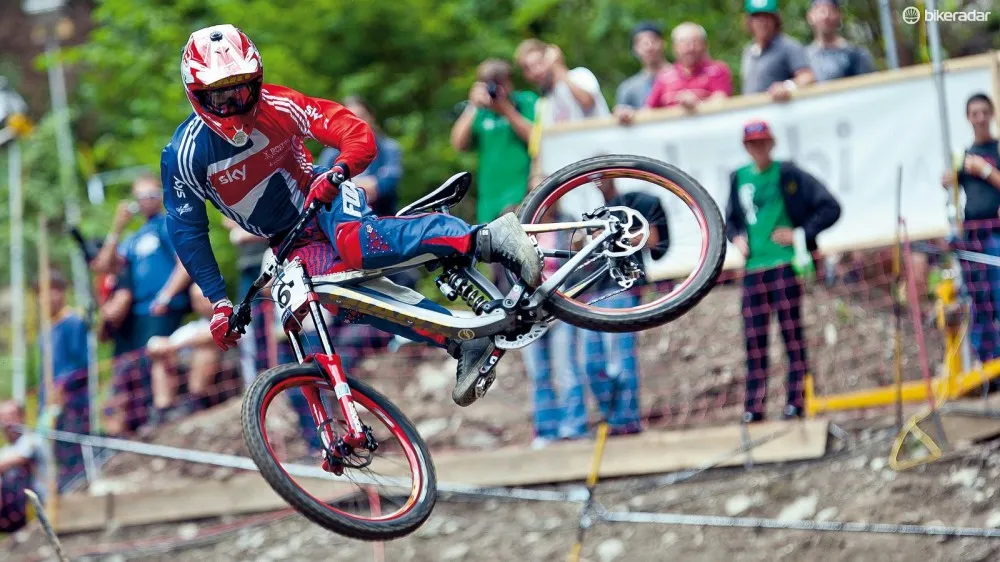
Danny Hart has been riding clipped in from an early age
What do you think about flat pedals?
I’ve just been to Morzine, France, where I tried flats for a long period for the first time. I had lots of fun but found it quite hard to get used to the pedals. I didn’t realise how much I use my feet to turn the bike with clips. On the steeper stuff, it’s much harder to put the bike where you want to with flats.
You have a pretty wild riding style – one that people would typically associate with flat pedals…
From day one I’ve never ridden flats. I came straight from BMX, where I’d been riding clips from the age of eight, so when I swapped to DH it was normal to ride clips. The way I make them work is by using my feet a lot – I can put the bike wherever I want to, pretty much, by keeping my feet up as much as possible. I move around quite a lot on the bike and put my weight in the right place to make my tyres dig in for traction.
Why do you think clipless pedals are better for DH racing?
They allow you to be a lot more efficient on the bike because you can pedal in a circle. You also always know your feet are in a good position. I found that with flats I had to push quite a big gear, while with clips I can spin at a good cadence.
The flat pedal pro – Joe Smith
Joe is one of the few World Cup racers who still uses flat pedals, and he does so to great effect, making light work of gnarly sections where others back off.
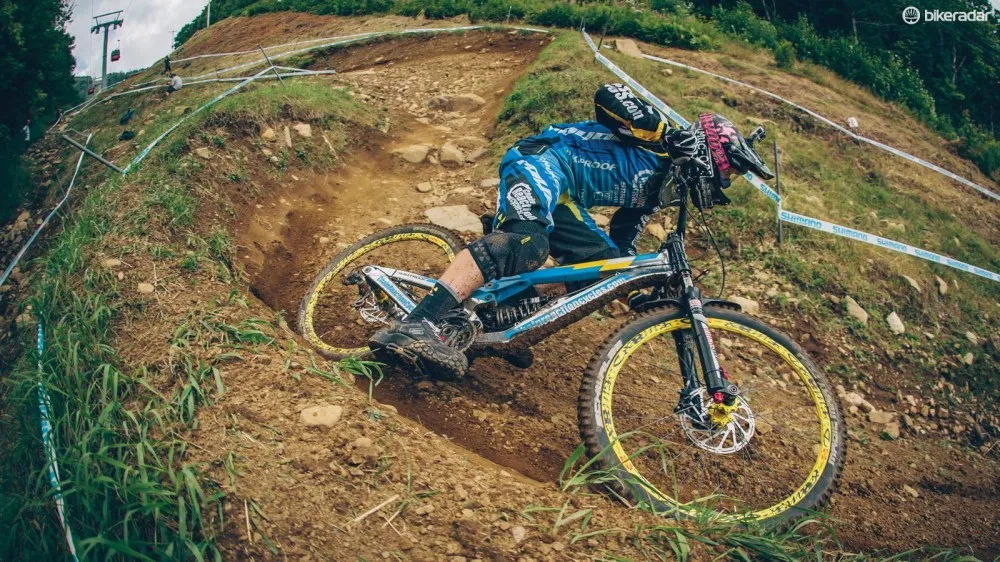
World cup DH racer Joe Smith is a flat pedal devotee
What is it about flat pedals that works for you?
I’ve found that the steeper, more technical tracks with lots of corners are where I excel. Riding with flat pedals gives me the confidence to push harder in these sections.
Are there areas where flat pedals are a disadvantage?
There are the obvious things like pedalling, where I think flats must be a disadvantage. I’ve tried to work on technique to minimise this and I feel I can make up more time in the other parts of the tracks than I lose in the pedalling sections.
Do clipless pedals seem like a good idea to you?
I’ve tried clips a couple of times, even using them for most of 2013, and found them very good in certain circumstances. But ultimately, it’s down to personal preference and I prefer flats.
Would you advise people to try flats?
Riding with flat pedals helps a lot in the beginning when you’re learning how to jump, manual, corner and bunnyhop. These are all essential riding techniques and being able to do them on flat pedals will allow you to transfer those skills into all the different areas of mountain biking.
Clipless pedals pros and cons
Pros
- Bike becomes an extension of you
- Increased confidence because you can’t bounce off the pedals
- Dedicated shoes offer higher performance
- Pedalling becomes more efficient because you can pull up as well as push down
Cons
- Can encourage bad habits if skills aren’t developed on flat pedals first
- Need dedicated shoes
- Can make it scary to commit in gnarly terrain
Flat pedals pros and cons
Pros
- Freedom of movement on the bike
- Increased confidence because you’re not attached to the bike
- Don’t need dedicated riding shoes
- Encourages good technique
Cons
- Harder to pedal on rough terrain
- Rough terrain can unseat your foot
- Easy to slip a pedal and injure your leg
- Only the downstroke is effective when pedalling
